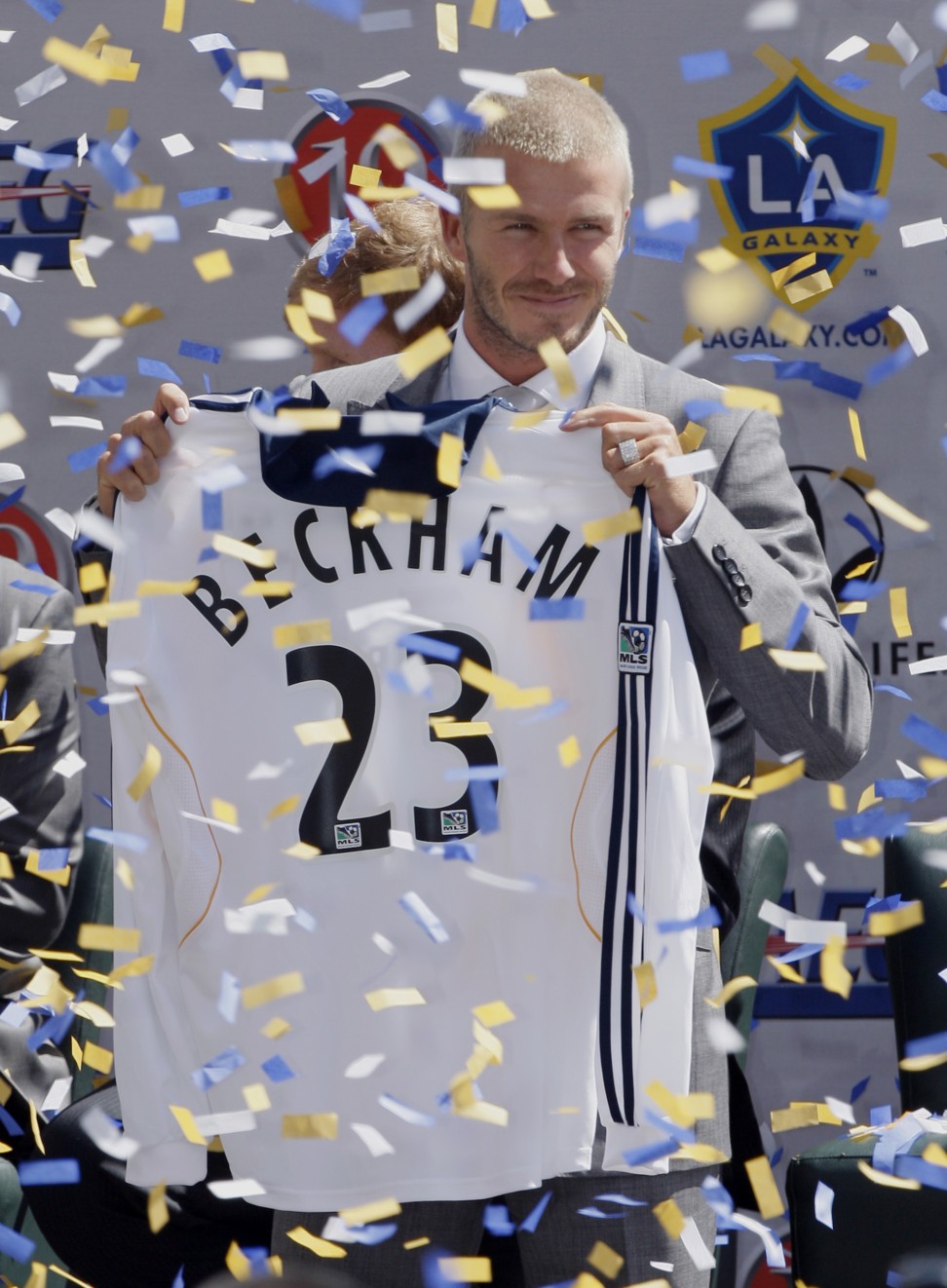
Could Major League Soccer compete with Europe for players, fans and sponsors one day?
- The North American league is experiencing an upswing in popularity with no end in sight
- Will it ever reach the heights, or finances, of European football?
It’s January 11, 2007 and a blonde-haired David Beckham has just put his John Hancock on a behemoth US$250 million (HK$1.9 billion) contract to play for Los Angeles Galaxy.
Beckham’s goal: to bring football – via Major League Soccer – to a brand new audience: the American people. Cue the cynics.

Pundits, including myself, scoffed at the idea. Soccer was a fringe sport in North America at that point, barely registering on any radar. In looking back at the clippings, the press were not kind to Beckham, calling the move a “publicity stunt”, “ill-advised” and “destined to fail”.
It’s high time we apologise to the former England captain and Manchester United star. I’ll go first.
Sorry, David. We should have never doubted your wisdom and exquisite fashion sense.
Major League Soccer in 2018 is a far cry from the MLS in 2007. The league has exploded over the past 11 years, fighting and winning an uphill battle against the Big Four as they’re known (the NFL, NBA, MLB and NHL) in terms of fans, salaries, sponsorship deals, television viewers and ticket sales.
According to Nielsen Sports, the MLS has seen a 27 per cent rise in interest since 2012 alone, driven largely by two long-term bankable demographics – Hispanics and millennials. Within this period, television and online viewership has boomed, growing at a rate of 13 per cent year-on-year.
Currently in the play-off stage of its 23rd season, the league has been adding franchises consistently and has kept folding teams to a minimum.
When the league started back in 1993, there were 10 teams, and by 2011 there were 18. By 2022 there will be 28, which brings the MLS close to being on par with the big boys (each of the Big Four have at least 30 teams).
Attendance has gone in lockstep, almost doubling from 2000 to 2016. Along with that comes the invariable rise in merchandise, sponsorship deals and new stadiums now built with the sole intention of hosting MLS teams.
But where things get really interesting is when it comes to players’ salaries. Beckham’s whale of a contract was, and still is, a misnomer for the league. However MLS players are no longer getting second jobs to support themselves like they used to.
Back in 2007 the median players’ salary in the MLS was US$50,400, a number that has risen to US$117,000 (HK$916,000), more than double over 11 years. But where the league has started to turn heads is some of the bigger contracts it has dished out to marquee players lately, who mostly hail from Europe.
A recent MLS salary report showed the number of millionaires in the league jumped from 28 to 46 from last season alone while the total salary for 669 players hit US$249 million. The league’s highest paid player – Toronto FC’s Sebastian Giovinco – earns US$7.1 million a season, which puts him on par with average salaries in the NBA (who have comparatively smaller roster), above the NHL, NFL and MLB.
Of course, there’s a way to go to reach the upper echelon of the Big Four (each of their highest paid players make more than US$30 million sans the NHL), but the MLS is no longer and afterthought when it comes to financial offerings.
Beckham’s transfer blew the doors open for European players to come over as swan songs for their careers. The list grows every year, and what’s interesting is of late, players are going to the MLS, playing well, and getting coaxed back to Europe.
Zlatan Ibrahimovic is the latest example: he went to Los Angeles looking like his career was about to drift off into the Swedish sunset, but instead turned heads by scoring boatloads of goals and is now rumoured to be returning to AC Milan for boatloads of money.

Sooner or later if the maths hold, the MLS will be able to offer its players salaries that are not only competitive compared to the Big Four, but within striking distance of the European leagues sometime in the next five to eight years.
An average player at the Premier League’s top dog moneymaker Manchester United makes £5.2 million (US$6.7 million), but if the MLS holds form with its exponential rise, its average salary could double again within three years and its ceiling could jump up substantially as well.
The MLS will turn heads soon by plucking a player from Europe who isn’t in the twilight of their careers. Many believed it was going to be 20-year-old American Christian Pulisic, who currently plays for German club Borussia Dortmund and makes US$1.4 million, but that chatter took a hit when the US soccer team failed to qualify for the 2018 World Cup.

Regardless, no one knows if the MLS will ever reach the level of the European leagues when it comes to financials, or even exposure – but it is no longer unimaginable.
Maybe we should ask Beckham to get out his crystal ball again. He did just launch his own Miami franchise, which will start playing in the 2020 season, a testament to his unwavering trust in all things MLS.
But once again the pundits are sceptical he can compete in a heavily saturated Florida sports market dominated by American football.
Will we look back on his move, 10 years later, and have to apologise, again?

